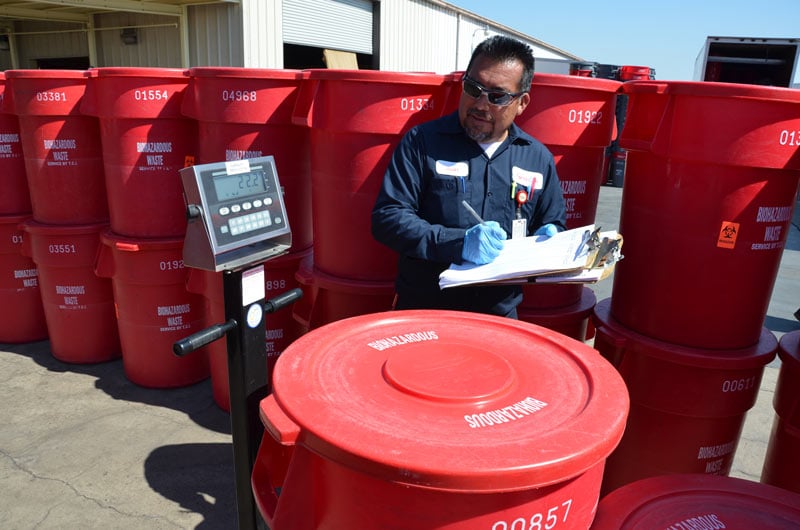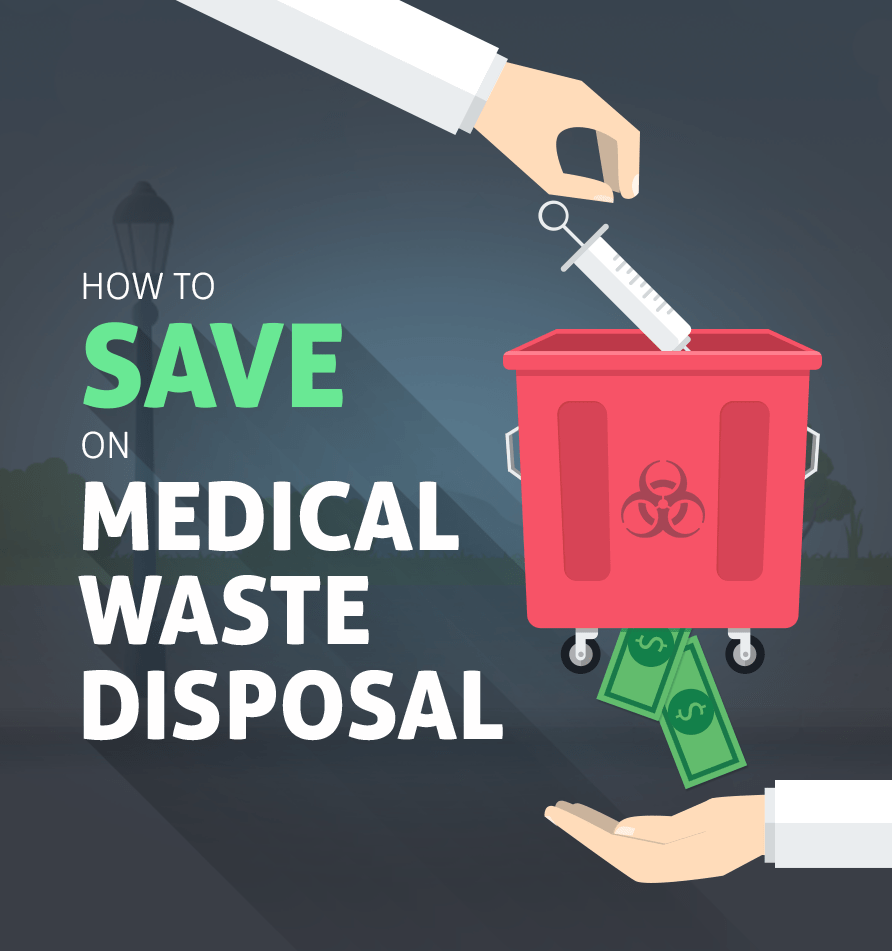Sustainable Solutions for Medical Garbage Disposal
The proper management and disposal of medical waste is vital in preserving a sustainable and safe health care system. As the quantity of clinical waste proceeds to rise, discovering sustainable options becomes significantly vital. This demands the adoption of eco friendly and effective techniques for disposing of medical waste. This intro will explore various lasting remedies for clinical garbage disposal, including waste segregation and sorting, on-site waste therapy systems, recycling and reuse programs, waste-to-energy conversion technologies, along with partnership and education and learning campaigns. By carrying out these solutions, medical care facilities can not just reduce the ecological impact of clinical waste, but also make certain the security of healthcare employees and the general public.
Waste Partition and Arranging
The procedure of waste segregation and sorting is important in ensuring appropriate monitoring and disposal of medical waste. Medical waste is categorized right into various groups based on its possible risk to human health and wellness and the setting. Appropriate segregation and sorting of waste aid to reduce the danger of contamination and make certain that each type of waste is taken care of and gotten rid of suitably.
The very first step in waste segregation and sorting is to identify and separate different kinds of clinical waste at the factor of generation. This entails recognizing the various categories of waste, such as contagious waste, sharps waste, pharmaceutical waste, and chemical waste. medical waste disposal. Each classification needs particular managing and disposal approaches to stop injury to medical care employees, individuals, and the setting

On-site Waste Therapy Solutions
Continuing from the previous subtopic on waste partition and sorting, an efficient service for lasting clinical waste disposal is the execution of on-site waste therapy systems - medical waste removal. These systems permit health care facilities to treat their clinical waste on-site, lowering the demand for transport and disposal at off-site centers. On-site waste therapy systems commonly include innovations such as autoclaves, microwave systems, or chemical sanitation devices
Autoclaves, frequently made use of in health care setups, utilize high-pressure steam to sanitize and deal with clinical waste. This procedure efficiently eliminates microorganisms, viruses, and other potentially unsafe microbes, providing the waste risk-free for additional handling and disposal. Microwave systems, on the other hand, use microwave radiation to warm and deal with the waste, achieving similar outcomes to autoclaves.
Chemical disinfection systems entail using chemicals to sanitize and deal with medical waste. These systems can make use of different anti-bacterials, such as chlorine-based remedies, to reduce the effects of virus and reduce the danger of contamination. The cured waste can then be safely thrown away in regular waste streams or undergo further treatment, such as shredding or incineration.
Applying on-site waste treatment systems provides a number of benefits. It reduces the environmental effect related to transferring medical waste to off-site centers, decreasing carbon emissions and the risk of mishaps throughout transport. In addition, it provides healthcare facilities with more control over the therapy procedure, ensuring compliance with guidelines and reducing the potential for unapproved accessibility to delicate medical waste.
Recycling and Reuse Programs
To further enhance sustainable medical waste disposal practices, health care centers can implement recycling and reuse programs, building on the foundation of on-site waste treatment systems. Recycling and reuse programs provide an extra layer of environmental obligation by diverting medical waste from landfill and finding different usages for particular products.
One secret element of reusing and reuse programs is the partition of waste at the resource. medical waste removal. By executing appropriate waste segregation procedures, medical care centers can divide recyclable products, such as plastics, steels, and glass, from non-recyclable waste. This permits for the reliable recycling of these products, reducing the requirement for virgin sources and decreasing the environmental impact of medical garbage disposal
Along with reusing, healthcare facilities can discover opportunities for recycling particular medical products. Single-use products like surgical drapes and dress can be sterilized and reused, lowering the demand for brand-new materials and reducing waste generation. Recyclable sharps containers can likewise be utilized, decreasing the quantity of plastic waste created from non reusable containers.
Applying recycling and reuse programs calls for appropriate facilities and training - WasteX Medical Waste Disposal. Medical care centers must spend in suitable reusing bins, partition systems, and sterilization equipment, in addition to guarantee team are enlightened on proper waste administration techniques
Waste-to-Energy Conversion Technologies
One possible strategy to resolve medical garbage disposal sustainably is with the utilization of waste-to-energy conversion technologies. These innovations provide an encouraging solution to the WasteX Medical Waste Disposal growing trouble of clinical waste, which poses substantial environmental and public wellness dangers. Waste-to-energy conversion includes transforming the organic components of medical waste right into energy, such as heat or electricity, with different procedures like pyrolysis, incineration, and gasification.
Incineration is one of the most commonly used waste-to-energy innovation for clinical garbage disposal - WasteX Medical Waste Disposal. It involves the controlled combustion of waste at high temperature levels, transforming it right into ash, gases, and warmth. This warmth can be made use of to create vapor, which can after that be transformed right into electricity
Pyrolysis and gasification are newer innovations that provide more eco-friendly options to incineration. Pyrolysis involves heating the waste in the absence of oxygen, resulting in the manufacturing of gases and char. Gasification, on the various other hand, transforms waste right into a synthetic gas or "syngas" that can be utilized as a fuel for electricity generation or other commercial procedures.
These waste-to-energy conversion modern technologies not just lower the quantity of clinical waste however additionally supply a resource of eco-friendly energy. Additionally, they can help in reducing greenhouse gas exhausts and dependence on nonrenewable fuel sources (WasteX Medical Waste Disposal). Nevertheless, it is essential to guarantee that these technologies are executed with appropriate exhausts regulate actions to lessen any type of prospective adverse effect on air quality and public health.
Collaboration and Education Campaigns
Partnership amongst stakeholders in the healthcare market is essential for implementing sustainable remedies for medical waste disposal. In order to properly deal with the difficulties associated with medical waste administration, it is important for healthcare facilities, waste monitoring companies, regulators, and other pertinent parties to work together.

Furthermore, education initiatives play an important duty in promoting sustainable techniques. Health care experts need to be familiar with the ecological effect of improper waste management and the importance of applying lasting options. Educating programs and educational products can assist them comprehend the correct partition of waste, the usage of eco-friendly options, and the benefits of waste-to-energy conversion innovations.
Cooperation and education can additionally promote the advancement of policies and guidelines for clinical waste disposal. By collaborating, stakeholders can contribute to the production of detailed policies that make sure safe handling, transport, and treatment of clinical waste.
Verdict
To conclude, taking on sustainable solutions for clinical waste disposal is crucial in order to lessen the negative influences on the environment and public wellness. Waste segregation and sorting, on-site waste therapy systems, recycling and reuse programs, waste-to-energy conversion modern technologies, and partnership and education and learning efforts are all important methods to achieve this objective. Implementing these options requires partnership in between healthcare centers, waste monitoring companies, and federal government agencies, in addition to continuous education and learning and awareness projects.
The procedure of waste segregation and sorting is critical in guaranteeing correct management and disposal of medical waste.The initial step in waste segregation and sorting is to determine and divide different kinds of medical waste at the point of generation. This entails recognizing the different categories of waste, such as infectious waste, sharps waste, pharmaceutical waste, and chemical waste.Continuing from the previous subtopic on waste segregation and sorting, an efficient solution for lasting medical waste disposal is the implementation of on-site waste treatment systems. The treated waste can after that be securely disposed of in routine waste streams or go through further therapy, such as shredding or incineration.